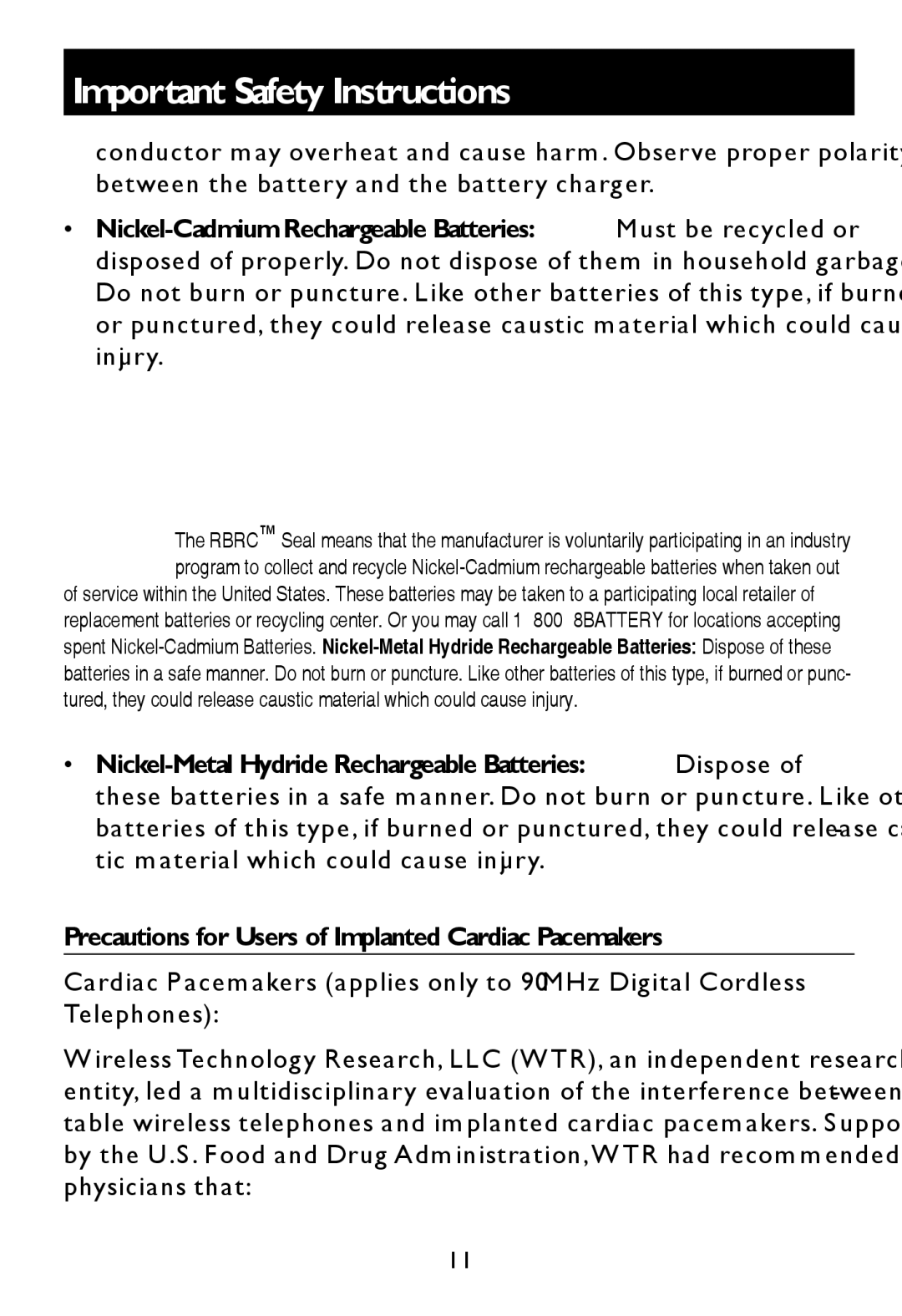
Important Safety Instructions
conductor may overheat and cause harm. Observe proper polarity between the battery and the battery charger.
•
The RBRC™ Seal means that the manufacturer is voluntarily participating in an industry program to collect and recycle
of service within the United States. These batteries may be taken to a participating local retailer of replacement batteries or recycling center. Or you may call 1 800 8BATTERY for locations accepting spent
•
Precautions for Users of Implanted Cardiac Pacemakers
Cardiac Pacemakers (applies only to 900 MHz Digital Cordless Telephones):
Wireless Technology Research, LLC (WTR), an independent research entity, led a multidisciplinary evaluation of the interference between por- table wireless telephones and implanted cardiac pacemakers. Supported by the U.S. Food and Drug Administration,WTR had recommended to physicians that:
11
